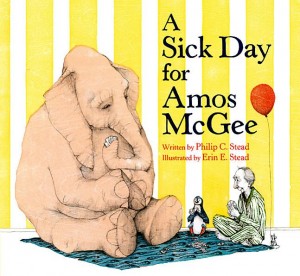Books for Teaching Our Children about 9/11
by Crystal Hicks, Collections Librarian
I was in eighth grade when 9/11 happened. I remember my teacher abruptly switching the TV to live coverage of the Twin Towers, and it seemed like time stopped as we were all engrossed in the unfolding tragedy. Even as a teen in Kansas, I could tell 9/11 had a profound effect on America in so many ways: Americans united, Americans divided, terrorism emerged, Islamophobia increased, a war began, and the world felt less safe.
As a new parent, I find it unimaginable that my child could know nothing of 9/11 and its impact, and yet, she currently does. For her, September 11, 2001, is as distant as 1969 is for me (which I hear was a pivotal year, though it always seemed like ancient history). Fortunately, there are many books coming out that explain 9/11 and its ramifications for youth of all ages, which I can share with her as she gets older.
Books for the youngest readers soften the tragedy of 9/11 by focusing on the Survivor Tree, a Callery pear tree that survived the collapse of the towers and was replanted at the memorial in 2011. Sean Rubin’s “This Very Tree” follows the attacks and their aftermath from the perspective of the tree, first buried under rubble, then rehabilitated in the Bronx. “Branches of Hope,” written by Ann Magee and illustrated by Nicole Wong, pairs the tree’s story with that of a family whose daughter grows up to join the NYFD. Marcie Colleen’s “Survivor Tree,” illustrated by Aaron Becker, follows the tree through the seasons, emphasizing hope as the tree continues to grow despite its near-death experience. These books avoid graphic imagery, allowing adults to explain the attacks on their own, with the opportunity to provide as much or as little detail as their individual children can handle.
A number of books for older readers more explicitly depict the events of 9/11, providing multiple perspectives. Lauren Tarshis’s graphic novel “I Survived: The Attacks of September 11, 2001,” illustrated by Corey Egbert, goes to the heart of 9/11 and follows a firefighter’s son searching for his father amidst the chaos that followed the attacks. For a more comprehensive account of 9/11, read Don Brown’s “In the Shadow of the Fallen Towers,” which includes graphic illustrations of the attacks themselves, the long and hazardous rescue operations, and the subsequent war in Afghanistan. Alan Gratz’s “Ground Zero” interweaves the story of a 9-year-old boy surviving the attack on the North Tower with the story of an Afghan girl on September 11, 2019, who saves the life of an American soldier, making her family a target for the Taliban. Finally, Alyssa Bermudez bases “Big Apple Diaries” on her own diaries of growing up in New York, so her graphic memoir accessibly blends the trauma of 9/11 with the ups and downs of everyday life.
Other recent books choose to focus on the long-reaching aftermath of 9/11 and can help explain the profound impact the attacks had on both the United States and Afghanistan. In “Piece by Piece: The Story of Nisrin’s Hijab,” by Priya Huq, Bangladeshi-American Nisrin is the victim of a hate crime for wearing a headscarf in 2002; because of the attack, Nisrin decides to learn more about Islam and wear hijab, against the wishes of her family. Coauthors Jawad Arash and Trent Reedy base “Enduring Freedom” on their own friendship, writing of a young American soldier who meets and befriends an Afghan teen in 2003. Tahereh Mafi’s “An Emotion of Great Delight” also takes place in 2003, centered on Iranian-American Shadi, who’s struggling under the weight of familial tragedy, an estranged best friend, and a potential romance, not to mention the constant Islamophobia she experiences at school. Leaving the realm of historical fiction, Saadia Faruqi’s “Yusuf Azeem Is Not a Hero” takes place in 2021, as twelve-year-old Yusuf learns about how 9/11 impacted his family at the time while also facing local opposition to building a mosque in his hometown.
I may not have to teach my child about 9/11 for several years, but it’s a comfort to know that these books, and others yet to be written, will be on hand to help explain such a pivotal event in American history.


 Belle da Costa Greene. While few may have recognized that name, now a wonderful new piece of historical fiction highlights the woman’s remarkable career. I am alluding to “
Belle da Costa Greene. While few may have recognized that name, now a wonderful new piece of historical fiction highlights the woman’s remarkable career. I am alluding to “ Once upon a time, I decided I was going to draw a tree every day, and I haven’t missed a day yet. I now have over two hundred drawings and what amounts to a part-time job, because some of the drawings take more than five hours. This is caused by a mix of inexperience and trying to draw more complex ideas in an attempt to keep things interesting. Occasionally, these ideas come to me without much effort, but I have recently found myself leaning more heavily on external inspiration.
Once upon a time, I decided I was going to draw a tree every day, and I haven’t missed a day yet. I now have over two hundred drawings and what amounts to a part-time job, because some of the drawings take more than five hours. This is caused by a mix of inexperience and trying to draw more complex ideas in an attempt to keep things interesting. Occasionally, these ideas come to me without much effort, but I have recently found myself leaning more heavily on external inspiration. Did you hear the one about how dry it is out there? It’s so dry the cows are giving evaporated milk! (Ba-dum, crash!) We are knee-deep in a drought. I don’t spend a lot of time thinking about cattle in times of heat and drought, but I do spend a lot of time thinking about my gardens in these conditions. For me personally, the problem is even more concerning this year as we are trying to start new gardens on a new property.
Did you hear the one about how dry it is out there? It’s so dry the cows are giving evaporated milk! (Ba-dum, crash!) We are knee-deep in a drought. I don’t spend a lot of time thinking about cattle in times of heat and drought, but I do spend a lot of time thinking about my gardens in these conditions. For me personally, the problem is even more concerning this year as we are trying to start new gardens on a new property.